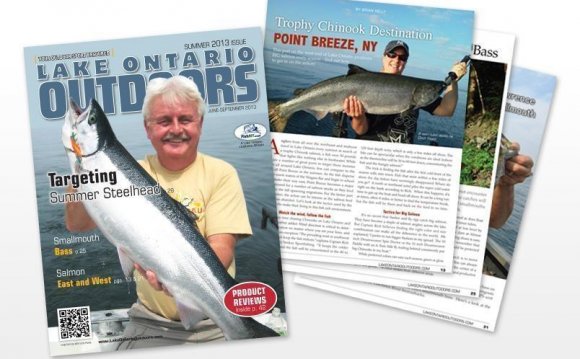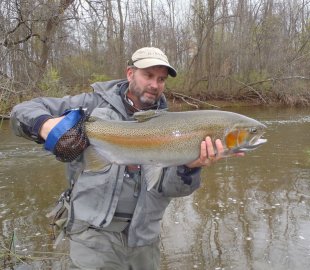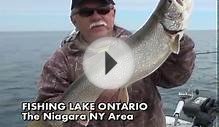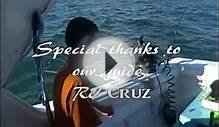
 Egg flies are most likely the most popular fly for fishing the Great lakes tributaries. For many of us, these are first flies we used when we first started fishing the tributaries. This is not without warrant. There are times when egg flies are the most productive fly patterns on the rivers. Even when the fishing gets tough, we can often depend on egg flies to save the day.
Egg flies are most likely the most popular fly for fishing the Great lakes tributaries. For many of us, these are first flies we used when we first started fishing the tributaries. This is not without warrant. There are times when egg flies are the most productive fly patterns on the rivers. Even when the fishing gets tough, we can often depend on egg flies to save the day.
Why are egg patterns so effective? When it comes to a food sources for trout, eggs seem to have one of the strongest food attractions as anything you can find in the wild. Both trout and salmon will readily respond to eggs that are freely drifting. It does not matter if these fish are actively spawning or not. When it comes to trout, they will key in on eggs faster than any other food source. Even when spawning activity has wound down and eggs are no longer readily available, trout will still respond to a well-presented egg fly, the memory remains.
As you can imagine, with all the attention and fisherman using egg patterns, there is a large variety of patterns, ranging from very complex to the very simple and basic. Even though egg patterns are relatively simple patterns to tie, there is wide range of flavors and styles of patterns. Egg patterns are often tied with various colors of yarn and Estaz, glow chenille, and other basic fly tying materials. Fly tiers will often try to imitate the nucleus of the egg and even incorporate minute blood dots. Egg patterns can also be very simple and basic, tied with basic egg yarn. Obviously how flashy you would like a fly or subtle an egg pattern is, will depend on fishing conditions.
Since egg patterns are easy to tie and we use in expensive materials, it is always a good idea to carry a large selection and supply of flies. Fishing conditions on the tributaries can and do change very quickly. Water conditions will play more of a role in what type of egg patterns to fish. When the water is running high with some color in it, the more colorful, flashy and slightly larger flies will be more effective. These egg flies are tied with flashing material such as Estevez and glow chenille. Just the opposite is true when fishing in low clear water or fishing pressure is heavy. The more natural looking smaller egg patterns will be far more effective in these conditions. These flies will be tied with egg yarn in natural looking colors. This type of tying material does not have a lot of flash in it. In these conditions you do not want to visually overload the fly. We are trying to imitate a very basic food source. I prefer to keep egg fly patterns simple, because, fished correctly, right along the bottom, we have a tendency to go through quite a few flies.
Fly tying tip:
When tying and designing new egg flies, I always incorporate a light veil over the pattern with some sort of egg yarn. The reason for this, when a trout takes an object into its mouth and instantly decide this is not what it want and reject that object instantly. The idea of the veil around the egg pattern is to cause the fishes’ teeth to temporarily hang up in it. Giving us a chance to realize the fish has taken the fly and it’s time to set the hook.
All of this fly design does not mean much unless the fly is properly presented. Nature has designed eggs to be denser than water. This way the eggs will stay for the most part, where the fish deposit them in the river bottom. We think of eggs drifting through the water column similar to the way aquatic insects, nymph do. This is not the case; an egg drift is more like an egg roll. That is, the egg does more rolling or bouncing along the bottom than drifting just off the bottom. Obviously, the trick here is to imitate this egg drift – rolling along the bottom. We need to slow down the speed of the drift; an egg drift is considerably slower.
YOU MIGHT ALSO LIKE












